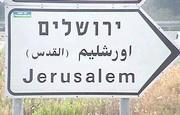Now That You Point It Out...
I've felt for a while that I identify with the mixed orange-blue sentiment, symbolized nicely by itsnodream. In keeping with my general indecisiveness, I've not been vehemently on either side of the raging controversy. I hear a lot of sense in the concept that this move is, as my friend Yoel puts it, "cutting off a limb to save a life." A unilateral seperation puts a clear line between us and them, and it tests them in front of the world. Not that I really believe that we can gain legitimacy in the eyes of the world, but it doesn't hurt to illustrate a dictionary of right/wrong definitions.
But detracting from that imperative is the fear that we are, indeed, rewarding terror, and the complementary fear that we are allowing the source of attacks to come within that much closer range of Israel proper. And of course I have a huge amount of pity for the families who were encouraged to build their lives where they did and now must watch everything be destroyed.
So I have mixed feelings, and I simplistically thought (as others have as well (that last link refers to the July 4 post)) that that would be appropriately represented by intertwining both colors, especially with the addition of white. Blue and white to emphasize what they have symbolized for ages, and orange for the legitimate dissension. But Shanna's recent post has made me think twice.
In choosing orange, the anti-disengagement camp set themselves against the blue. They chose agression instead of cooperation, separation instead of unity. "Jews dont expel Jews" has a much stronger message when we're all wearing the same color.Hmm.
Addendum: For some good points (and some not-so-good points) on issues from both sides, see the recent discussion over at Chayyei Sarah


6 Comments:
Thanks Julian. It was his idea first.
Er...Thank Julian. Althouhg, also: thanks, Julian!
I couldn't find the post where Yoel said it, but I first heard the "cutting off a limb to save a life" idea from R' Aharon Lichtenstein, and I'd suspect that, directly or indirectly, Yoel heard it from him. In fact, Haaretz ran two pieces on the disengagement, one by R' Aharon, the other an interview with R' Yaakov Meidan. I think that they speak for themselves.
(It's interesting to note that not only are R' Aharon and R' Meidan in the same yeshiva together, but that R' Meidan was one of the very first students in that yeshiva, and that on Chanukah he will take his place next to R' Aharon as a new Rosh Yeshiva of Har Etzion.)
Upon rereading your post, I realized that your point was about the colors themselves, not the ideology beind them. I'm wondering if we shoudl be worrying about the symbols we're using, when the country it tearing itself apart.
Shanna, I figured your acknowledgement in your own post would be sufficient. But there's no such thing as too much appreciation, so...thanks, Julian!
Ilan, thanks for the links. Yoel didn't actually say it on his blog, he said it to me in context of a conversation we were having. I suspect you're right, that he was quoting R' Lichtenstein; in fact, I suspect he told me as much and I just didn't remember.
As for your comment on substance, you're only partially right. I wrote about the issues, practically if not ideologically, but the point I took from Shanna was the ideology behind choosing disparate symbols in the first place. I entirely agree with you that the situation is very grave right now, and very frightening. But I think what Shanna was pointing to is the same "breakdown of communication" that you mention in the comments to which you linked.
Colors, logos, slogans are all items of propaganda, and propaganda is necessary for a large-scale public protest. Too much of it, though, can build antagonism (a better word, maybe, than aggression) unnecessarily, as people get caught up in identifying or anti-identifying (yes, I know that's not a word) with the movement as much as in supporting or opposing the movement's goals.
Point taken. Fair enough.
Post a Comment
<< Home